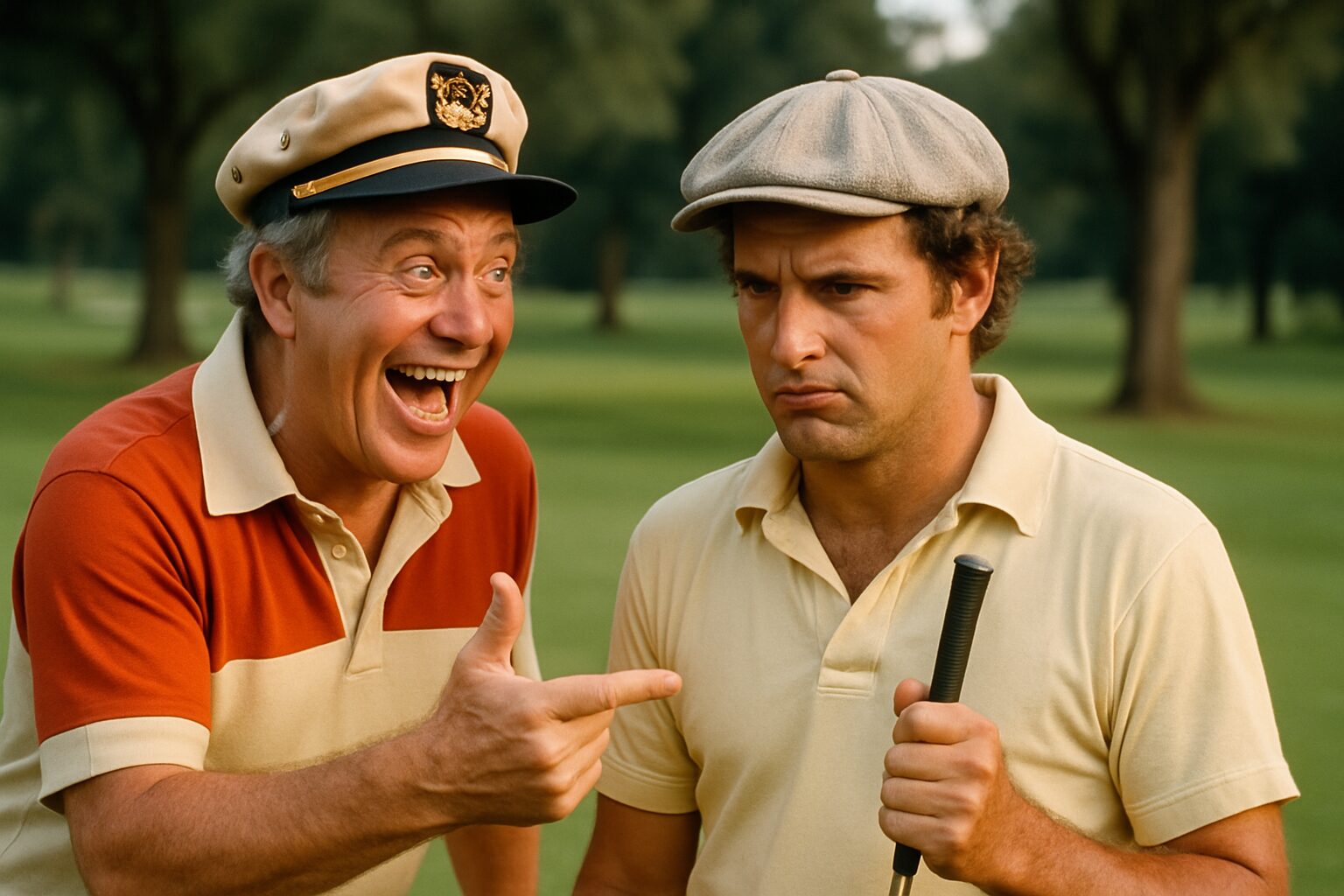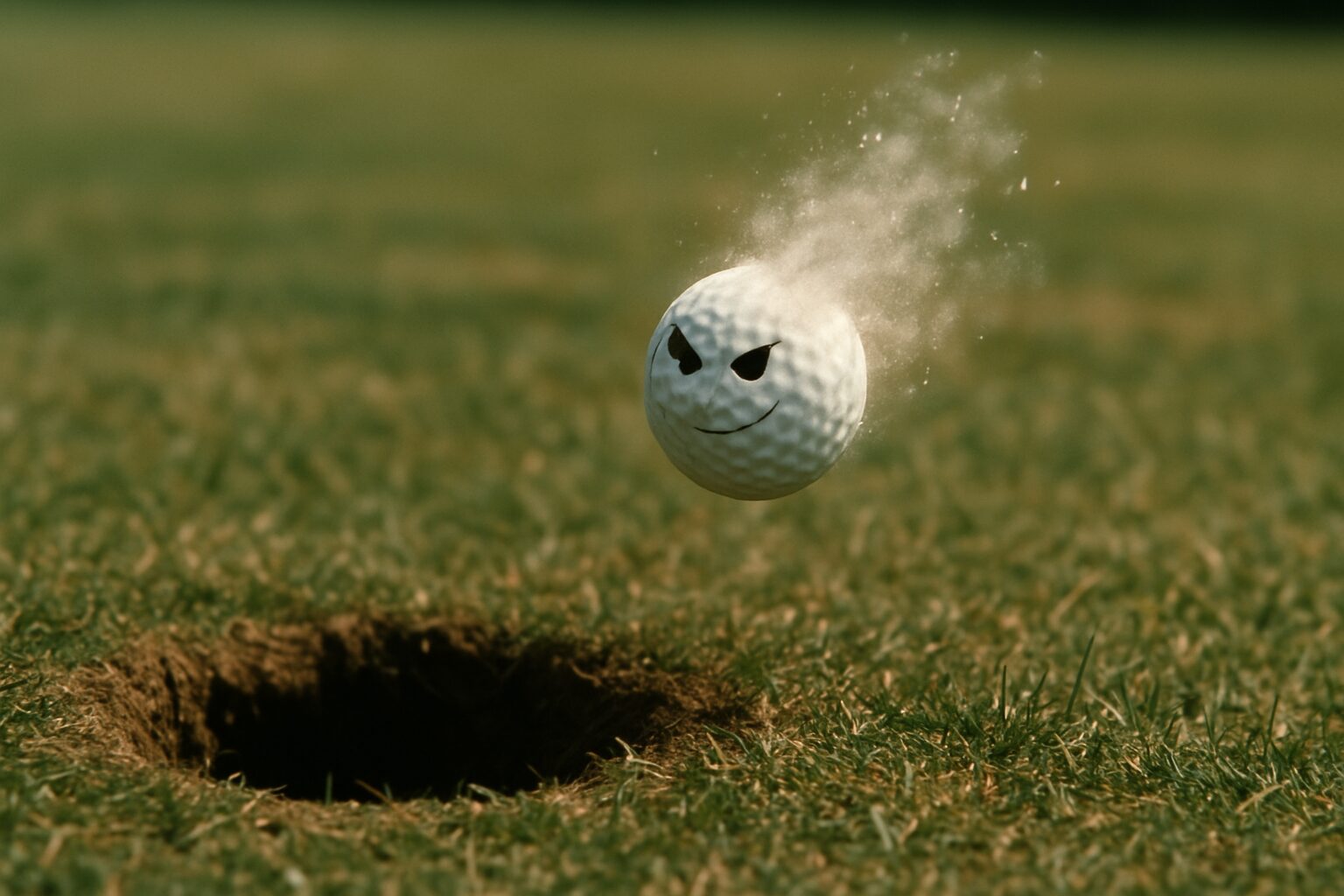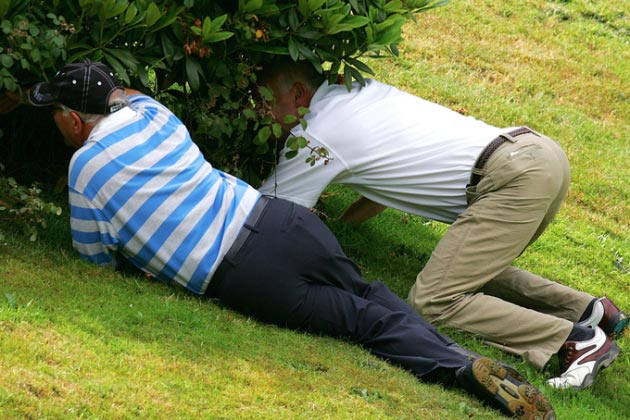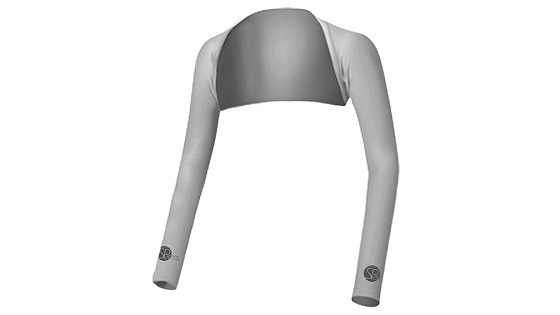Blog
What Your Golf Clubs Say About You

Whether you know it or not, your golf bag and clubs speak volumes about you as a player.
After playing for 20 plus years, I can pretty much look at someone’s bag on the range and guess their handicap before watching them take a swing. Needless to say, first impressions on the golf course are very real.
If you play a lot of golf and want to make a good first impression, follow these rules. Here is a breakdown of how each component of your golf bag describes you as a golfer.
Golf Bag and Accessories
Before going into the clubs themselves, let’s talk about the golf bag, as that usually says a lot as well. Here’s how I think of it:
Tour bag – If you aren’t a touring professional, never, ever use a Tour bag. They’re massive and not functional for the average golfer.
Cart bag – Someone who is at least a 15 handicap, if not more. If I see a ball retriever, I know they’re shooting in the 90s on a good day and triple digits on a bad one.
Hybrid bag – Someone who likes to walk nine holes with a push cart occasionally, but not enough to go all in on a stand bag. Likely shooting in the high 80s or 90s.
Stand bag – This type of bag usually means you’re a solid golfer who is shooting in the 70s most of the time. Even if you never walk, a stand bag is usually a sign of an established golfer.
While there are some exceptions to the rule, these are usually pretty standard when it comes to golf bags. The accessories on your bag also factor in too.
Custom name on bag – Having your full name embroidered on your bag is fine. But having something like John “Big Time” Smith is tacky and unnecessary. I fully expect that type of person to miraculously find their golf ball in the trees and talk about how good they were in high school.
Gadgets – If you have multiple gadgets, training aids, and other accessories hanging from your bag, I’m a bit worried. Keep it minimal with a club brush, maybe a bag tag from your favorite course, and 1-2 towels.

Driver and Fairway Woods
Your big stick and other woods don’t always say as much about you as your irons do. With woods, most golfers play big brands (Titleist, Callaway, TaylorMade, etc.).
But the shaft is usually a more telling sign of who you are a golfer. If you see someone playing an X-stiff shaft or one you know is super stiff, like the HZRDUS green, they’re usually a good player.
Irons and Wedges
Irons are usually the easiest thing to spot when another golfer sees you. Good players tend to have blades or small cavity back irons.
While mediocre golfers who shoot in the 80s or 90s play a larger cavity back, sometimes with graphite shafts. And golfers who shoot 100+ almost always have a hybrid set, massive cavity back irons, and lightweight graphite shafts.
Wedges don’t say a ton as most golfers play standard, blade wedges. Some older players or high handicappers might opt for a small cavity back to match their irons.
But if I see some gimmicky club like the Spin Doctor, a 2-sided chipper, or Square Strike from the Golf Channel infomercials, I’m absolutely terrified. These types of clubs usually mean you suck around the greens and I will always make sure to stand behind you in case you shank one.
Iron Covers
Please, I beg you, do not use iron covers – no matter what they look like.
Anytime I’m playing solo and get paired up with a group and I see iron covers when I’m’ warming up, I know I’m in for a long day.
Iron covers are tacky and completely unnecessary. They instantly show everyone at the golf course that you’re a high handicap golfer who doesn’t know much about the game.
I don’t care if you’re playing $3,000 PXG irons, skip the iron covers entirely (because clearly you can afford new ones). The only exception is if you’re traveling on an airplane and want to protect your investment, otherwise burn them immediately.

Putter
Finally, your putter also says a lot about you as a golfer.
In general, solid golfers tend to take care of their putters much better than someone who shoots in the 90s or 100s. If I see someone with a ton of scuff marks, I know they’re making 3-putts look easy.
Meanwhile, established players keep a headcover on at all times, usually have a newer grip, and don’t throw it.

After reading this, what does your golf bag say about you? Is it giving a good first impression, or do you need to make some adjustments before you head out to the golf course?
Let me know in the comments!
Written by Michael Leonard
Blog
The Art of the Unsolicited Golf Tip: How to Annoy Your Playing Partners with Wisdom

There’s a certain breed of golfer, a truly special individual, who believes that every swing, every putt, every moment on the course is an opportunity for unsolicited advice. They are the self-appointed gurus of the green, the unsolicited senseis of the sand trap. And while most people recoil from such an individual, I, Ty Webb, find a certain perverse charm in their relentless, often misguided, generosity. After all, what is golf if not a canvas for human folly, painted with strokes of well-intentioned, yet utterly useless, wisdom?
Consider the scenario: your playing partner, a man (or woman) of quiet desperation, is about to address the ball. Their brow is furrowed, their stance is tentative, their very soul is screaming for a moment of peace. And then, from the depths of your profound, albeit unrequested, knowledge, you unleash it: “Keep your head down!” Or, “Slow backswing!” Or, my personal favorite, delivered with a knowing wink, “Be the ball.” The effect is instantaneous. A subtle flinch. A barely perceptible sigh. The swing, already fraught with anxiety, becomes a tortured ballet of self-doubt. The ball, inevitably, finds its way into the deepest, darkest rough.
And that, my friends, is the art. The beauty of the unsolicited golf tip lies not in its efficacy, but in its disruption. It’s a gentle reminder that even in the serene confines of the golf course, chaos lurks. It’s a subtle assertion of dominance, a playful jab at the fragile ego of your fellow golfer. It’s a way of saying, without actually saying it, “I know more than you, even if I don’t.”
Of course, there are rules to this art. Never offer a tip when someone is actually asking for one; that would be far too helpful, and thus, entirely counterproductive. Always deliver your wisdom with an air of profound nonchalance, as if the secret to a perfect swing has just casually occurred to you while contemplating the existential dread of a missed putt. And most importantly, never, ever, acknowledge the catastrophic results of your advice. A shrug, a thoughtful nod, perhaps a mumbled, “Well, that’s golf,” is all that’s required.
So, the next time you’re on the course, and you see a fellow golfer struggling, resist the urge to be genuinely helpful. Instead, embrace the art of the unsolicited golf tip. For in the gentle torment of your playing partners, you will find a profound, if slightly mischievous, joy. And who knows, perhaps in their frustration, they will, inadvertently, discover their own path to enlightenment. Or at least, a new appreciation for silence.
Blog
Why Your Golf Balls Disappear (and It’s Not the Gophers)

Ah, the vanishing golf ball. A phenomenon as old as the game itself, and one that has baffled, frustrated, and occasionally driven golfers to the brink of madness for centuries. Most theories involve gophers, those furry, subterranean saboteurs with an insatiable appetite for Titleists. Or perhaps a particularly aggressive squirrel, or a flock of unusually organized crows. But I, Ty Webb, have delved deeper into this mystery, and I can assure you, the truth is far more profound, and far more amusing.
Consider, if you will, the golf ball itself. A small, dimpled sphere, designed for one purpose: to be struck with great force and sent hurtling through the air. A life of constant abuse, of being smacked, sliced, and occasionally submerged in murky ponds. Is it any wonder, then, that some of these brave little spheres simply decide they’ve had enough? They yearn for freedom, for a life beyond the confines of the fairway. They dream of rolling unencumbered through fields of wildflowers, or perhaps, for the more adventurous among them, a quiet retirement in the depths of a particularly challenging water hazard.
I’ve seen it happen, you know. A perfectly struck shot, soaring through the air, destined for glory. And then, poof. Gone. Not a trace. No splash, no rustle in the bushes, just an empty space where a golf ball once was. It’s not a gopher, my friends. It’s an escape. A liberation. That golf ball, in its infinite wisdom, has chosen a different path. It has decided that its destiny lies not in the bottom of a cup, but in the boundless expanse of the unknown.

And who are we to judge? We, who are so obsessed with control, with precision, with the rigid rules of the game. Perhaps the golf ball, in its spontaneous disappearance, is teaching us a valuable lesson about letting go. About embracing the unexpected. About the inherent futility of trying to dictate the trajectory of a small, white sphere that clearly has a mind of its own.
So, the next time your golf ball vanishes into thin air, don’t curse the gophers. Don’t blame your swing. Instead, offer a silent salute to that brave little sphere, wherever it may be. For it has achieved what many of us can only dream of: true freedom. And who knows, perhaps one day, it will return, laden with tales of its adventures, ready to impart some profound, dimpled wisdom upon us all.

When JJ Spaun stood over a 64-foot birdie putt on the 72nd hole of the 2025 U.S. Open at Oakmont, few could have predicted what would come next. The ball meandered across the slick green, trickling over every contour, picking up speed at the crest, and then—like it had GPS—dropped center cup. Spaun dropped his putter, raised his arms, and the crowd erupted. With that single stroke, he claimed his first major title in one of the most dramatic finishes in U.S. Open history.
But how does Spaun’s putt stack up against other legendary finishes in the tournament’s storied past? Let’s break down some of the most iconic moments and see where this one lands.
1. Payne Stewart – 1999 U.S. Open at Pinehurst
Perhaps the most iconic putt in U.S. Open history came from Payne Stewart, who nailed a 15-footer for par on the 18th to win by one over Phil Mickelson. The pose—fist pump and outstretched leg—has since been immortalized in a statue at Pinehurst. What made it legendary wasn’t just the putt—it was the context: Stewart’s final major before his tragic death just months later.
Verdict: Iconic and emotional. Spaun’s putt was longer, but Stewart’s was more poetic.
2. Tiger Woods – 2008 U.S. Open at Torrey Pines
Woods drained a 12-foot birdie on the 72nd hole to force a playoff with Rocco Mediate—while basically playing on one leg. That tournament went to sudden death after an 18-hole playoff, and Tiger prevailed. This was peak Tiger drama, pain and all.
Verdict: Spaun’s putt was longer, but Tiger’s win was sheer willpower and mystique.
3. Jack Nicklaus – 1972 U.S. Open at Pebble Beach
With a 1-iron shot that hit the flagstick on 17 and a crucial birdie putt on 18, Jack sealed a dominant win. His precision and timing under pressure showed why he’s the GOAT.
Verdict: Not a putt for the win, but a signature finishing statement from Jack. Spaun’s was more electric in terms of pure putter drama.
4. Ben Hogan – 1950 U.S. Open at Merion
Hogan’s 1-iron into the 18th fairway and the par to force a playoff—just 16 months after a near-fatal car crash—remain legendary. He won the playoff and completed one of golf’s great comeback stories.
Verdict: Larger-than-life comeback. Spaun’s putt had more flair, but Hogan’s win was heroic.
5. JJ Spaun – 2025 U.S. Open at Oakmont
Let’s not underestimate what Spaun accomplished. The pressure was immense. He wasn’t the favorite. And on the most treacherous greens in golf, he buried a 64-foot bomb—a putt most players would be happy to lag to within 5 feet—to win the U.S. Open outright.
Verdict: For distance, surprise, and drama, Spaun’s putt may be the most shocking winning stroke in U.S. Open history.
Final Thoughts
JJ Spaun may not have the résumé of a Nicklaus or Woods, but for one Sunday afternoon in June 2025, he created a moment that will live in golf lore forever. Spaun’s putt was longer than Stewart’s, more unexpected than Tiger’s, and more dramatic than any final-hole finish in recent memory.
In terms of pure clutch putting? It might just be the greatest walk-off in U.S. Open history.
-

 Product Review6 years ago
Product Review6 years agoThe Perfect Practice Putting Mat Review by Jason Tenzer
-

 Blog4 years ago
Blog4 years agoLoophole Rule Offers PGA Tour Pros a Mulligan
-

 Blog4 years ago
Blog4 years ago2021 Buyer’s Guide: The Top 10 Value Golf Balls For Distance & Feel
-

 Blog4 years ago
Blog4 years agoGolf Marriage Counselor
-

 Blog6 years ago
Blog6 years ago9 Biggest Chokes Of The Past Decade
-

 Product Review6 years ago
Product Review6 years agoTHE ADJUSTABLE IRONS: WALKING STICKS GOLF CLUBS
-

 Equipment6 years ago
Equipment6 years agoOHK Sports Interview by Jason Tenzer
-

 Product Review6 years ago
Product Review6 years agoSparms Product Review – Save the Sunburn for the Beach

















